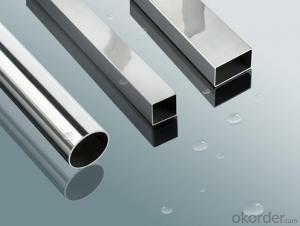Metal Braided Hose with Flexible Material
- Loading Port:
- Tianjin
- Payment Terms:
- TT OR LC
- Min Order Qty:
- 1000 pc
- Supply Capability:
- 100000 pc/month
OKorder Service Pledge
OKorder Financial Service
You Might Also Like
Item specifice
Metal Braided Hose with Flexible Material
Applications of Metal Braided Hose with Flexible Material:
--Refueling system
--Chemical and pharmaceutical industry
--Industrial hydraulic systems
--Air conditioners in industrial and construction –site vehicles
--Food and beverage industry
--Special and standard industrial applications
--Water and cleaning management
Features of Metal Braided Hose with Flexible Material:
1. )O. D.: 13-18MM 0.2-3M long
2. )Nut.: Nickel/Chrome Plated Brass (Zinc / Iron / Aluminum is available)
3. )Size Of Nut.: Female&Male 1/2''; 3/4''; 3/8''; 7/8''; 5/16'', and M10...
4. )Insert.: Brass (Zinc / Aluminum / Plastic is available)
5. )Inner tube.: Rubber/ EPDM/PVC
6. )Covered Material: Stainless Steel 201, 301, 304 /Aluminium Wire
7. )Working Pressure: 5Kg-15Kg
8. )Temperature: 0-92° C
9. )Quality Assurance: 3 years
RemarkAPPLICATION: HOUSEEHOLD WARE, BATHROOM WARE, SHOWER HOSE
PAYMENT: T/T, L/C
DELIVERY TIME: 20DAYS OR 30DAYS AFTER RECEIVED 30% DEPOSITS
MOQ: 5000PCS
ODM&OEM IS ACCEPTABLE
PackageInner: PP bag /Blister packing Outer: Carton box
Specifications of Metal Braided Hose with Flexible Material:
NO | I.D | Refer to O.D | Working pressure | Burst pressure | approximate Weight | |||||
(inch) | (mm) | (inch) | (mm) | MPa | Psi | MPa | Psi | kg/m | lbs/ft | |
1 | 1/8 | 3.2±0.2 | 0.35 | 9±0.3 | 2.06 | 300 | 8.27 | 1200 | 0.078 | 0.12 |
2 | 5/32 | 4±0.2 | 0.4 | 10±0.3 | 2.06 | 300 | 8.27 | 1200 | 0.092 | 0.14 |
3 | 3/16 | 4.8±0.2 | 0.43 | 11±0.3 | 2.06 | 300 | 8.27 | 1200 | 0.108 | 0.16 |
4 | 1/4 | 6.3±0.3 | 0.5 | 12.7±0.3 | 2.06 | 300 | 8.27 | 1200 | 0.134 | 0.2 |
5 | 5/16 | 8.0±0.3 | 0.56 | 14±0.3 | 2.06 | 300 | 8.27 | 1200 | 0.147 | 0.22 |
6 | 3/8 | 9.5±0.3 | 0.63 | 16±0.4 | 2.06 | 300 | 8.27 | 1200 | 0.182 | 0.27 |
7 | 15/32 | 12±0.3 | 0.75 | 19±0.5 | 2.06 | 300 | 8.27 | 1200 | 0.238 | 0.35 |
8 | 1/2 | 12.7±0.4 | 0.78 | 20±0.5 | 2.06 | 300 | 8.27 | 1200 | 0.262 | 0.39 |
9 | 5/8 | 16±0.4 | 0.94 | 24±0.5 | 1.03 | 150 | 4.12 | 600 | 0.351 | 0.52 |
10 | 3/4 | 19±0.4 | 1.13 | 28.8±0.5 | 1.03 | 150 | 4.12 | 600 | 0.515 | 0.77 |
11 | 1 | 25.4±0.5 | 1.38 | 35±0.6 | 1.03 | 150 | 4.12 | 600 | 0.637 | 0.95 |
Images of Metal Braided Hose with Flexible Material:
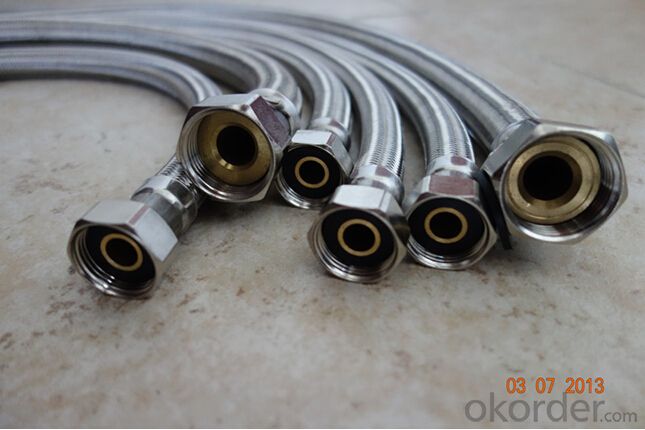
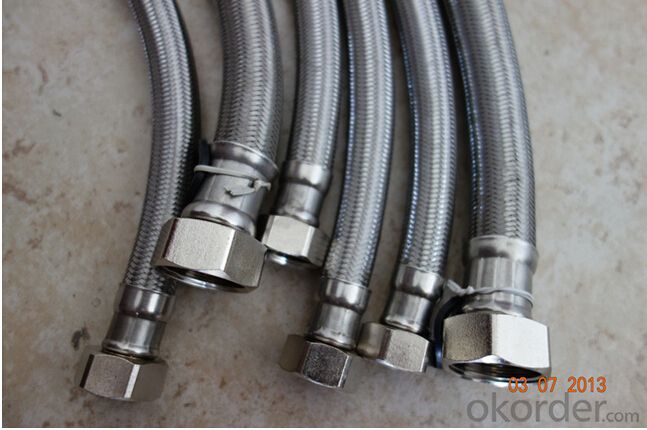
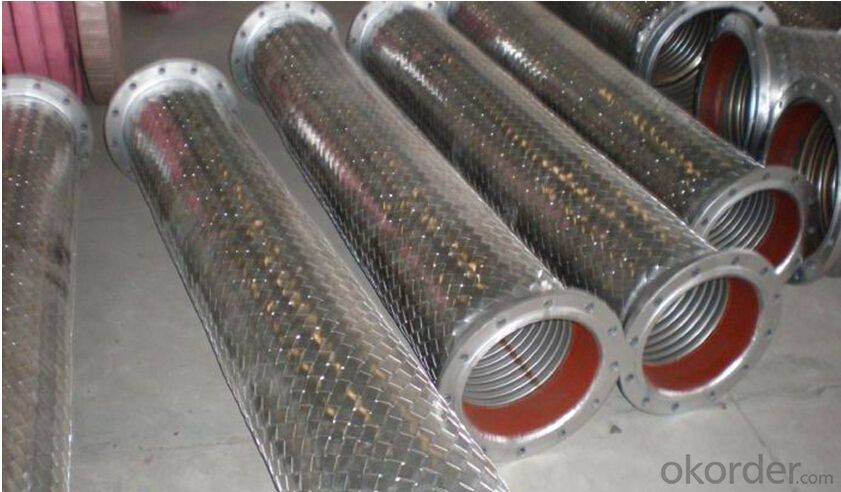
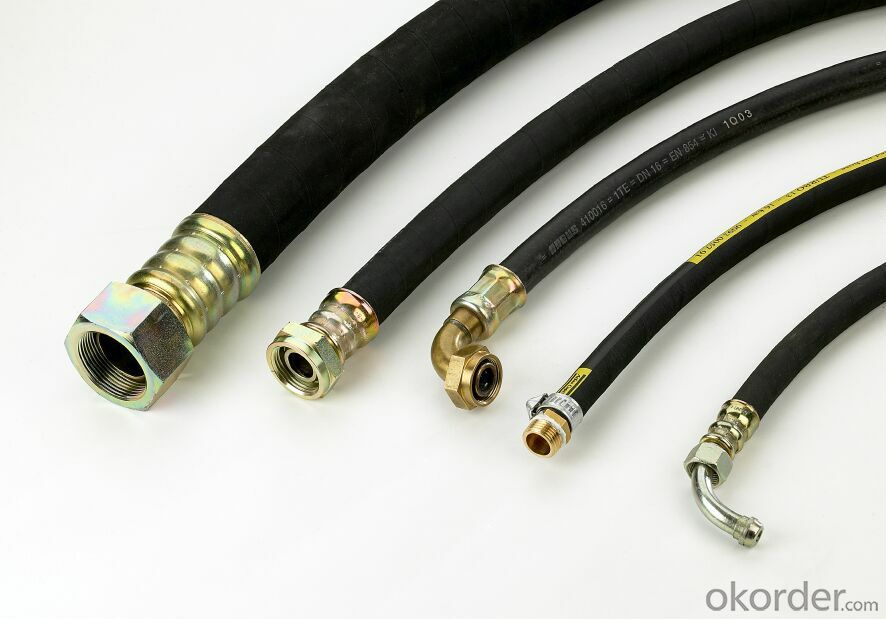
Package of Metal Braided Hose with Flexible Material:
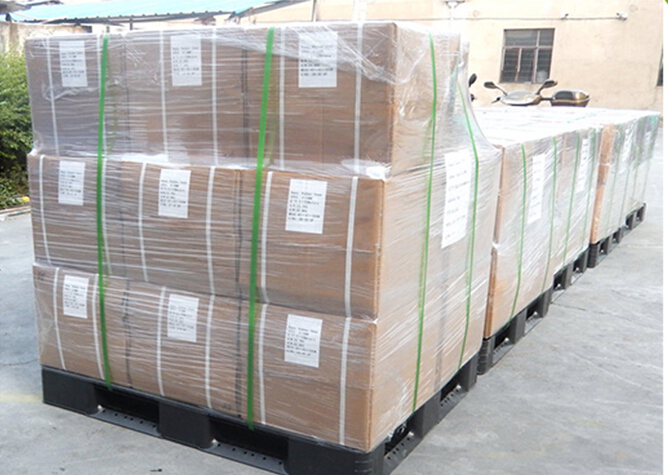
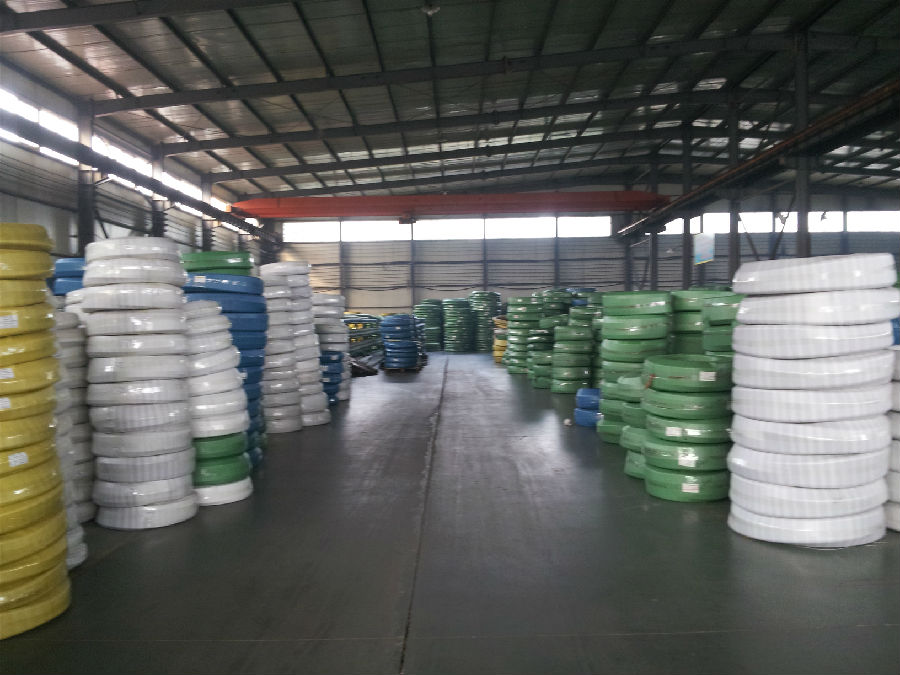
FAQ of Metal Braided Hose with Flexible Material:
Who we are:
Answer: We CNBM is a Chinese state-owned enterprise ranked 267th among the Global Fortune 500, as the largest building materials company,we have over 300 affiliated companies,and so many production lines and branch office distribute in China.
2. About our quality:
Answer: Every product needs to be quality proved before shipping.
3. About our service:
Answer: We could gurantte that we can reply you in 2 working hours.
- Q:What is the difference between 304J9 and 316J9 stainless steel pipes?
- The main difference between 304J9 and 316J9 stainless steel pipes lies in their composition and properties. 304J9 stainless steel pipes are part of the 304 series, which is a widely used austenitic stainless steel grade. This grade contains 18% chromium and 8% nickel, providing good corrosion resistance and excellent formability. It is commonly used in various industries, including construction, food processing, and pharmaceuticals. On the other hand, 316J9 stainless steel pipes belong to the 316 series, which is an upgraded version of the 304 series. It contains 16-18% chromium, 10-14% nickel, and 2-3% molybdenum. The addition of molybdenum enhances its corrosion resistance, especially in environments with chlorides or other corrosive agents. As a result, 316J9 stainless steel pipes are often used in marine applications, chemical processing, and coastal environments. In terms of mechanical properties, 316J9 stainless steel pipes generally exhibit higher tensile strength and higher yield strength compared to 304J9 stainless steel pipes. This increased strength is due to the addition of molybdenum, which improves the alloy's ability to withstand stress and deformation. Furthermore, the presence of molybdenum in 316J9 stainless steel pipes also improves their resistance to pitting and crevice corrosion, making them more suitable for aggressive environments. However, it is important to note that 316J9 stainless steel pipes may be more expensive than 304J9 stainless steel pipes due to the higher alloy content. Ultimately, the choice between 304J9 and 316J9 stainless steel pipes depends on the specific application and the level of corrosion resistance required. While 304J9 stainless steel pipes offer good general corrosion resistance, 316J9 stainless steel pipes provide superior resistance in harsher environments.
- Q:What are the standard sizes for stainless steel pipes?
- The standard sizes for stainless steel pipes can vary depending on the industry and application. However, there are some commonly used standard sizes that are widely available. In general, stainless steel pipes are produced in nominal sizes ranging from 1/8 inch to 72 inches in diameter. These sizes are typically classified using the Nominal Pipe Size (NPS) system, which refers to the approximate internal diameter of the pipe. The NPS sizes commonly used for stainless steel pipes range from NPS 1/8 to NPS 36. Additionally, stainless steel pipes are available in various schedules, which indicate the wall thickness of the pipe. The most commonly used schedules for stainless steel pipes are Schedule 5, Schedule 10, Schedule 40, and Schedule 80. It's important to note that these standard sizes may vary slightly depending on the country or region. Therefore, it is advisable to consult the relevant standards and regulations specific to your location or consult with a supplier to determine the exact standard sizes available for stainless steel pipes in your area.
- Q:How do stainless steel pipes compare to carbon steel pipes?
- Stainless steel pipes and carbon steel pipes are both widely used in various industries and applications, but they differ in terms of their composition, strength, durability, and corrosion resistance. One of the key differences between stainless steel pipes and carbon steel pipes lies in their composition. Stainless steel pipes are made from an alloy of iron with a minimum of 10.5% chromium content, which provides excellent corrosion resistance. On the other hand, carbon steel pipes are primarily made from iron and carbon, with lower amounts of other elements. In terms of strength, carbon steel pipes are generally stronger and more rigid than stainless steel pipes. This characteristic makes carbon steel pipes suitable for applications that require high pressure or heavy load-bearing capacity. Stainless steel pipes, although not as strong as carbon steel pipes, still possess good strength and are suitable for various applications where corrosion resistance is a priority. When it comes to corrosion resistance, stainless steel pipes outperform carbon steel pipes. The chromium content in stainless steel forms a protective layer on the surface, known as the passive film, which prevents corrosion and rusting. This makes stainless steel pipes ideal for applications in corrosive environments, such as chemical processing, marine, and offshore industries. Carbon steel pipes, on the other hand, are more prone to corrosion and require additional protective coatings or treatments to enhance their resistance to corrosion. Durability is another important factor to consider when comparing stainless steel pipes to carbon steel pipes. Stainless steel pipes are known for their long lifespan and resistance to wear and tear, making them a cost-effective choice in the long run. Carbon steel pipes, while durable, may require more maintenance and regular inspections to prevent corrosion and degradation. In conclusion, stainless steel pipes offer superior corrosion resistance, making them more suitable for applications in corrosive environments. Carbon steel pipes, on the other hand, are stronger and more rigid, making them suitable for high-pressure applications. The choice between stainless steel and carbon steel pipes ultimately depends on the specific requirements of the application, including the level of corrosion resistance, strength, and durability needed.
- Q:Can stainless steel pipes be used for wastewater treatment plants?
- Yes, stainless steel pipes can be used for wastewater treatment plants. Stainless steel is highly resistant to corrosion and can withstand the harsh and corrosive environment of wastewater treatment plants. It is a durable and reliable material that can effectively transport and handle wastewater without degradation or contamination.
- Q:Stainless steel heating oven tube after treatment is heating blue will not be red?
- When the power is not enough, his argument is clearly untenable, and technology is a kind of metal surface treatment. Heating 250 degrees is not red, can not say is not normal, only can meet your work requirements, no problem.
- Q:What are stainless steel pipes used for?
- Stainless steel pipes are commonly used in various industries and applications due to their durability, corrosion resistance, and high strength. They are primarily used for transporting fluids and gases such as water, oil, gas, and chemicals. Additionally, stainless steel pipes find extensive use in plumbing systems, construction projects, automotive applications, food processing plants, pharmaceutical industries, and manufacturing processes where hygiene, reliability, and longevity are crucial.
- Q:Are stainless steel pipes resistant to high temperatures?
- Stainless steel pipes are known for their ability to withstand high temperatures. They are designed to maintain their structural integrity even when exposed to elevated temperatures. The high chromium content in stainless steel creates a protective oxide layer on the surface, preventing corrosion and ensuring long-lasting strength and durability, even in extreme temperature conditions. As a result, stainless steel pipes are suitable for various high-temperature applications, including industrial furnaces, heat exchangers, and exhaust systems. However, it is important to consider that the resistance to high temperatures may vary depending on the grade and alloy of stainless steel used. Therefore, it is crucial to carefully select the appropriate grade of stainless steel based on the specific temperature requirements of the application.
- Q:What is the difference between ERW and EFW stainless steel pipes?
- ERW (Electric Resistance Welded) stainless steel pipes are manufactured by rolling a flat steel into a cylindrical shape and then welding the edges together using electric resistance heat. On the other hand, EFW (Electric Fusion Welded) stainless steel pipes are produced by melting the edges of two steel plates or strips and then welding them together using an electric current. The main difference between ERW and EFW stainless steel pipes lies in the welding process, with ERW pipes having a smoother internal surface due to the absence of filler material, while EFW pipes have a slightly thicker weld seam. Additionally, EFW pipes are generally used for larger diameters and thicker walls, whereas ERW pipes are commonly used for smaller diameters and thinner walls.
- Q:How long do stainless steel pipes last?
- Stainless steel pipes are renowned for their durability and long-lasting nature, making them a favored option in a variety of industries and applications. The lifespan of stainless steel pipes can differ depending on various factors, including the quality of the stainless steel used, the installation environment, and the maintenance procedures followed. In general, stainless steel pipes boast an impressive lifespan and can endure for numerous decades. In some cases, with adequate care and maintenance, they can even surpass the century mark. This is attributed to the inherent qualities of stainless steel, such as its resistance to corrosion, high strength, and ability to withstand high temperatures. One of the primary reasons behind the prolonged lifespan of stainless steel pipes is their ability to resist corrosion. Stainless steel contains a minimum of 10.5% chromium, which forms a passive oxide layer on the surface when it comes into contact with oxygen. This oxide layer acts as a protective barrier, preventing further corrosion and ensuring the pipes' longevity. Moreover, stainless steel pipes can endure extreme temperatures, making them suitable for a wide range of applications. They possess excellent heat resistance, enabling them to maintain their structural integrity even under high temperatures. This characteristic contributes to their extended lifespan, as they can withstand thermal stress without deteriorating. Furthermore, the quality of stainless steel utilized in the manufacturing process plays a pivotal role in determining the pipes' lifespan. Higher grades of stainless steel, such as 316 or 304, exhibit greater resistance to corrosion and possess superior mechanical properties. Investing in high-quality stainless steel pipes can significantly extend their lifespan. Lastly, proper maintenance and regular inspections are vital for maximizing the lifespan of stainless steel pipes. Routine inspections aid in identifying any signs of corrosion, damage, or other issues before they escalate and create significant problems. Regular cleaning and maintenance practices, such as the removal of debris or scaling, also contribute to prolonging the pipes' lifespan. In conclusion, stainless steel pipes possess an exceptional lifespan and can endure for numerous decades or even surpass a century. Their resistance to corrosion, high strength, heat resistance, and adherence to proper maintenance practices all contribute to their prolonged lifespan. When considering stainless steel pipes for a specific application, it is crucial to select the appropriate grade and ensure proper care and maintenance to maximize their longevity.
- Q:Can stainless steel pipes be used for chemical processing?
- Indeed, chemical processing can indeed utilize stainless steel pipes. One must acknowledge stainless steel's remarkable ability to resist corrosion, rendering it an apt material for handling a diverse range of chemicals. It effectively wards off both organic and inorganic substances, including acids, bases, and salts. Moreover, stainless steel pipes exhibit commendable strength, durability, and resistance to extreme temperatures, enabling them to endure the often severe conditions prevalent in chemical processing. In addition, their ease of maintenance and cleaning renders them a favored choice within the industry. Nevertheless, it remains crucial to carefully consider the specific requirements of the chemicals involved and seek counsel from experts to select the most suitable grade of stainless steel, ensuring optimal performance and safety.
1. Manufacturer Overview |
|
|---|---|
| Location | |
| Year Established | |
| Annual Output Value | |
| Main Markets | |
| Company Certifications | |
2. Manufacturer Certificates |
|
|---|---|
| a) Certification Name | |
| Range | |
| Reference | |
| Validity Period | |
3. Manufacturer Capability |
|
|---|---|
| a)Trade Capacity | |
| Nearest Port | |
| Export Percentage | |
| No.of Employees in Trade Department | |
| Language Spoken: | |
| b)Factory Information | |
| Factory Size: | |
| No. of Production Lines | |
| Contract Manufacturing | |
| Product Price Range | |
Send your message to us
Metal Braided Hose with Flexible Material
- Loading Port:
- Tianjin
- Payment Terms:
- TT OR LC
- Min Order Qty:
- 1000 pc
- Supply Capability:
- 100000 pc/month
OKorder Service Pledge
OKorder Financial Service
Similar products
New products
Hot products
Hot Searches
Related keywords













